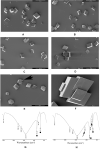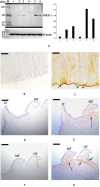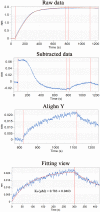Molecular Characterization of a Novel Shell Matrix Protein With PDZ Domain From Mytilus coruscus
- PMID: 33123020
- PMCID: PMC7573561
- DOI: 10.3389/fphys.2020.543758
Molecular Characterization of a Novel Shell Matrix Protein With PDZ Domain From Mytilus coruscus
Abstract
Mollusk shells are products of biomineralization and possess excellent mechanical properties, and shell matrix proteins (SMPs) have important functions in shell formation. A novel SMP with a PDZ domain (PDZ-domain-containing-protein-1, PDCP-1) was identified from the shell matrices of Mytilus coruscus. In this study, the gene expression, function, and location of PDCP-1 were analyzed. PDCP-1 was characterized as an ∼70 kDa protein with a PDZ (postsynaptic density/discs large/zonula occludes) domain and a ZM (ZASP-like motif) domain. The PDCP-1 gene has a high expression level and specific location in the foot, mantle and adductor muscle. Recombinantly expressed PDCP-1 (rPDCP-1) altered the morphology of calcite crystals, the polymorph of calcite crystals, binding with both calcite and aragonite crystals, and inhibition of the crystallization rate of calcite crystals. In addition, anti-rPDCP-1 antibody was prepared, and immunohistochemistry and immunofluorescence analyses revealed the specific location of PDCP-1 in the mantle, the adductor muscle, and the aragonite (nacre and myostracum) layer of the shell, suggesting multiple functions of PDCP-1 in biomineralization, muscle-shell attachment, and muscle attraction. Furthermore, pull-down analysis revealed 19 protein partners of PDCP-1 from the shell matrices, which accordingly provided a possible interaction network of PDCP-1 in the shell. These results expand the understanding of the functions of PDZ-domain-containing proteins (PDCPs) in biomineralization and the supramolecular chemistry that contributes to shell formation.
Keywords: Mytilus coruscus; PDZ-domain-containing protein; biomineralization; recombinant expression; shell matrix proteins.
Copyright © 2020 Sun, Jiang, Yan, Fan, Zhang, Xu and Liao.
Figures








Similar articles
-
Molecular characterization of a whirlin-like protein with biomineralization-related functions from the shell of Mytilus coruscus.PLoS One. 2020 Apr 8;15(4):e0231414. doi: 10.1371/journal.pone.0231414. eCollection 2020. PLoS One. 2020. PMID: 32267882 Free PMC article.
-
Characterization of a novel shell matrix protein with vWA domain from Mytilus coruscus.Biosci Biotechnol Biochem. 2020 Aug;84(8):1629-1644. doi: 10.1080/09168451.2020.1756735. Epub 2020 Apr 21. Biosci Biotechnol Biochem. 2020. PMID: 32314940
-
In-depth proteomic analysis of nacre, prism, and myostracum of Mytilus shell.J Proteomics. 2015 Jun 3;122:26-40. doi: 10.1016/j.jprot.2015.03.027. Epub 2015 Apr 6. J Proteomics. 2015. PMID: 25857279
-
Deciphering mollusc shell production: the roles of genetic mechanisms through to ecology, aquaculture and biomimetics.Biol Rev Camb Philos Soc. 2020 Dec;95(6):1812-1837. doi: 10.1111/brv.12640. Epub 2020 Jul 31. Biol Rev Camb Philos Soc. 2020. PMID: 32737956 Review.
-
Nacre biomineralisation: A review on the mechanisms of crystal nucleation.Semin Cell Dev Biol. 2015 Oct;46:2-10. doi: 10.1016/j.semcdb.2015.07.004. Epub 2015 Jul 20. Semin Cell Dev Biol. 2015. PMID: 26205040 Review.
References
-
- Addadi L., Weiner S. (1986). Interactions between acidic macromolecules and structured crystal surfaces. Stereochemistry and biomineralization. Mol. Crys. Liquid Crystals 134 305–322. 10.1080/00268948608079592 - DOI
LinkOut - more resources
Full Text Sources
Research Materials

